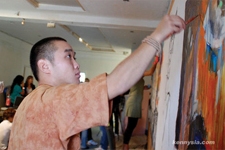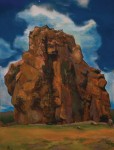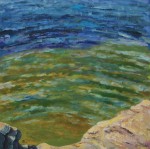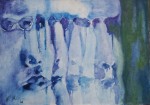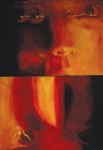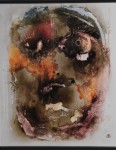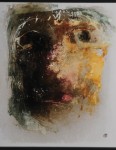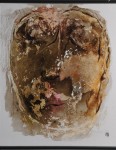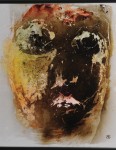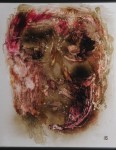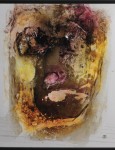Dalkh-ochir, a pioneer of contemporary Mongolian art, is an artist who has profoundly influenced the shape of the Mongolian art scene today. In the 1980s, his early works, which focused on the previously taboo elements of Mongolian history, such as the legend of “The He-Wolf and Beautiful Deer” (“Borte Chono and Goo Maral”), the mythical progenitors of Mongolian race, gained widespread attention. In the following years, he introduced many new media to the younger generation of artists by working with installations, performances, land art, etc.
In his paintings, Dalkh-ochir often employs the techniques of Mongolian traditional painting, or Mongol zurag, which is characterized by its lack of perspective and flatness of representation. In addition, Dalkh-ochir’s work frequently alludes to the cave paintings found in various parts of Mongolia. The series of paintings entitled “Messages” (2007) employ these techniques to juxtapose the past with the present, while the very name “Messages” invokes both the shamanistic notion of spiritual connection between man and nature as well as the more prosaic reality of modern means of communication (the individual pieces are named after the text messages the artist received while working on them).
Dalkh-ochir was born in 1958. He graduated from the Sculpture department of the Institute of Fine Arts (Ulaanbaatar, Mongolia) in 1979, and from the Oil painting department of the Ulaanbaatar Teacher’s College in 1988. Dalkh-ochir’s work has been extensively exhibited both in Mongolia and abroad; most recently, he has participated in the Third Guangzhou Triennial. A founding member of “Green horse” modern art association, Dalkh-ochir has led the “Blue sun” contemporary art group, an arts collective with a contemporary art focus since 2002. He currently lives and works in Ulaanbaatar, Mongolia.








































